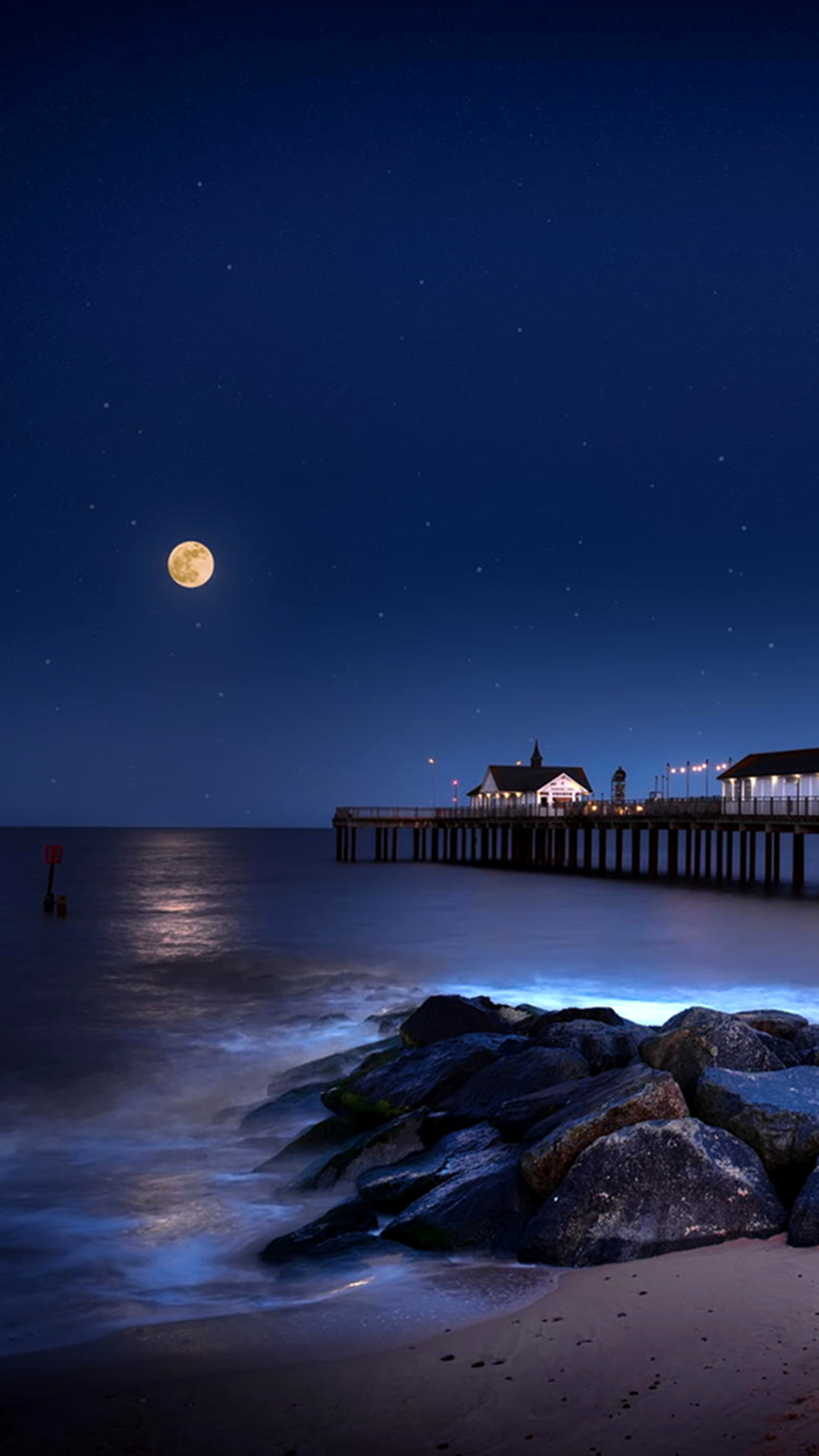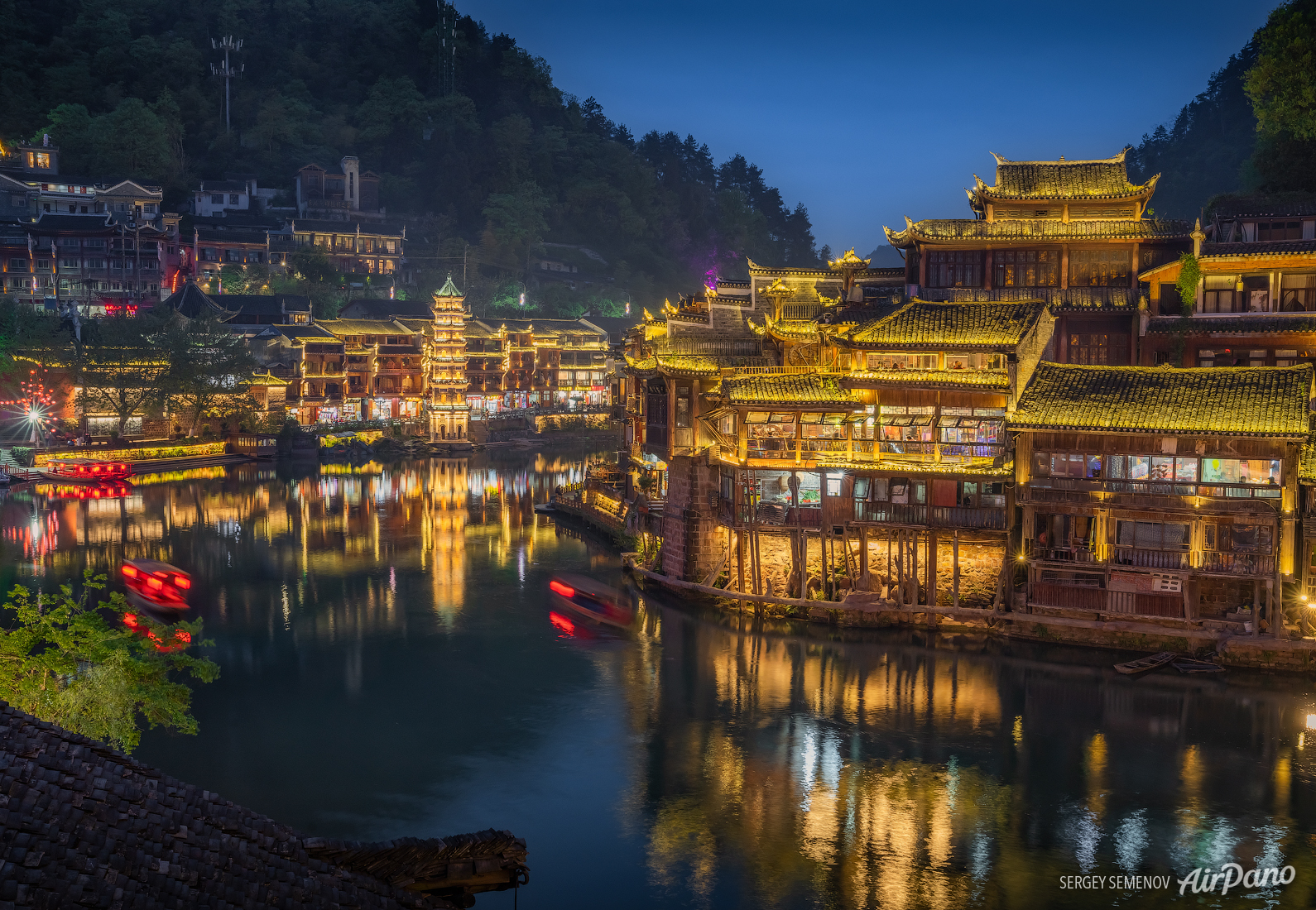

While the number of frames we can capture for a single photo, and therefore the total exposure time, is limited by technical considerations, we found that it is more tightly constrained by the photographer’s patience. Motion-blurred stars in a single-frame two-minute exposure. Taking pictures of real night skies we found that the per-frame exposure time should not exceed 16 seconds. To mitigate this, we split the exposure into frames with exposure times short enough to make the stars look like points of light. Viewers will tolerate motion-blurred clouds and tree branches in a photo that is otherwise sharp, but motion-blurred stars that look like short line segments look wrong. Just as with handheld Night Sight photos, nighttime landscape shots must take motion in the scene into account - trees sway in the wind, clouds drift across the sky, and the moon and the stars rise in the east and set in the west. Clearly, this cannot work with a handheld camera the phone would have to be placed on a tripod, a rock, or whatever else might be available to hold the camera steady. We realized that, just as with our previous experiments, high quality pictures would require exposure times of several minutes.

Soon after the original Night Sight was released, we started to investigate taking photos in very dark outdoor environments with the goal of capturing the stars. While individual frames may be fairly grainy, the combined, averaged image looks much cleaner. The frames are first aligned, compensating for both camera shake and in-scene motion, and then averaged, with careful treatment of cases where perfect alignment is not possible. To overcome this, Night Sight splits the exposure into a sequence of multiple frames with shorter exposure times and correspondingly less motion blur. Extending the exposure time for a photo increases the total amount of light captured, but if the exposure is long, motion in the scene being photographed and unsteadiness of the handheld camera can cause blur. How much light reaches the image sensor in a given amount of time is limited by the aperture of the camera lens. The visibility of shot noise decreases as the amount of light increases therefore, it is best for the camera to gather as much light as possible to produce a high-quality photo. The amount of light detected by the camera’s image sensor inherently has some uncertainty, called “ shot noise,” which causes images to look grainy. The dust clouds along the Milky Way are clearly visible, the sky is covered with thousands of stars, and unlike human night vision, the picture is colorful. It shows significantly more detail than a person can see with the unaided eye on a night this dark. The image has not been retouched or post-processed in any way. The Milky Way as seen from the summit of Haleakala volcano on a cloudless and moonless September night, captured using the Google Camera App running on a Pixel 4 XL phone. By allowing exposures up to 4 minutes on Pixel 4, and 1 minute on Pixel 3 and 3a, the latest version makes it possible to take sharp and clear pictures of the stars in the night sky or of nighttime landscapes without any artificial light.

This year’s version of Night Sight pushes the boundaries of low-light photography with phone cameras. In a previous blog post our team described how Night Sight is able to do this, with a technical discussion presented at SIGGRAPH Asia 2019. Night Sight, introduced last year as part of the Google Camera App for the Pixel 3, allows phone photographers to take good-looking handheld shots in environments so dark that the normal camera mode would produce grainy, severely underexposed images. A few years ago experiments with phone camera nighttime photography produced pleasing results, but the methods employed were impractical for all but the most dedicated users. Taking pictures of outdoor scenes at night has so far been the domain of large cameras, such as DSLRs, which are able to achieve excellent image quality, provided photographers are willing to put up with bulky equipment and sometimes tricky postprocessing.
#Night screen for google news software
Posted by Florian Kainz and Kiran Murthy, Software Engineers, Google Research


 0 kommentar(er)
0 kommentar(er)
